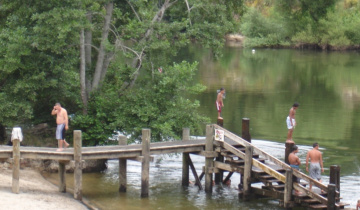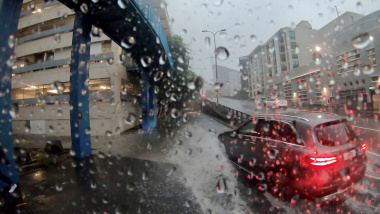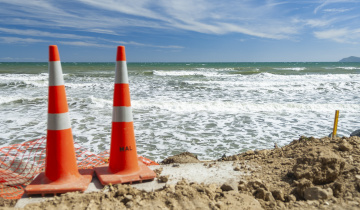Scientists will be knocking on doors in Edgecumbe next week seeking to survey the damage done to buildings from recent flooding caused when a stopbank on the Rangitaiki River breached.
The scientists, from NIWA and GNS Science plan to use the information to better understand how the flooding damaged buildings and infrastructure. Project leader and NIWA hazards analyst Ryan Paulik says the team will record the high water marks inside buildings, along with details about what the building is made from and how it has been constructed.
They also want to survey the degree of damage to things such as joinery and lining and house contents. The survey data will be examined for patterns that can help estimate the degree of damage related to the flood depth or flow speed. This information can then be used to estimate future flood damage for different sizes of flood across the country.
“We are trying to build a relationship between the damage observed, the type of building and how it was constructed,” Mr Paulik says.
“The information is vital for improving our knowledge and is used to support better land use planning and emergency management.”
Mr Paulik says one of the most distinctive aspects of this flood was the structural damage to homes caused by fast-moving and particularly deep water, something rarely seen in New Zealand flood events.
The scientists will also collect information on damage to roads, electricity and water supply, storm water and wastewater infrastructure. And they are also investigating the breach of the stopbank in more detail to try to determine what caused it.
Another aim of the survey is to find out about the warnings people received before the flood, and how they responded to them in the lead up to the stopbank breach. This information will help improve warnings in the future. At least 450 buildings in Edgecumbe have been exposed to floodwater according to Riskscape—a joint NIWA, GNS Science tool for analysing potential economic and human impacts and losses from natural hazards. This includes 234 residential properties, 15 non-residential and 200 outbuildings or other buildings.
The information gathered from the survey will help improve and expand Riskscape’s capabilities and will be applicable across New Zealand. In particular contributing to regional risk assessment. The survey area includes State Highway 2, College Rd, Rata Ave, Puriri Cres, Hinau Place, Matipo Place, Titoki Place and Tawhara Place. The survey does not ask for any personal details and all information will be kept confidential with only general trends will be reported on.
A report summarising the findings of this survey will be made available to the district and regional council and at www.riskscape.org.nz








